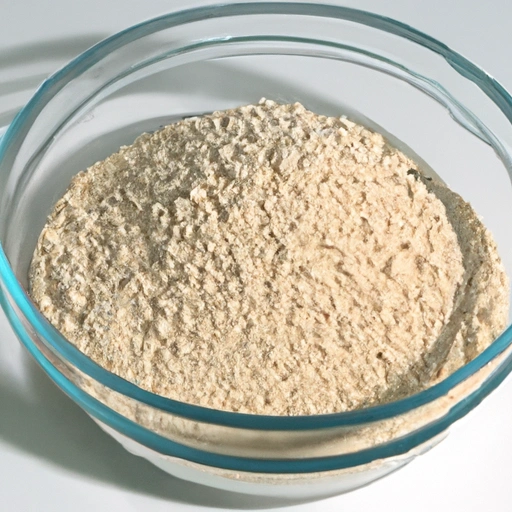Active Dry Yeast
Description

Active dry yeast is a type of dormant yeast used widely in baking, particularly in the preparation of breads, rolls, and other leavened bakery products. It consists of coarse, oblong granules that are reactivated by soaking in warm water (between 105°F and 110°F or approximately 40°C to 43°C) prior to mixing with flour. This activation process is known as 'proofing' the yeast. Active dry yeast helps dough to rise by producing carbon dioxide gas as it ferments the sugars present in flour. This leavening agent is available in small packets or jars and should be stored in a cool, dry place to maintain its freshness and potency. It is a staple in kitchens across the world, from North America to Europe to Asia.
Common uses
Active dry yeast is most commonly used in the preparation of baked goods such as bread, pizza dough, rolls, and pastries. It is also used in the brewing of beer and wine, as well as in the production of ethanol for fuel. In addition, active dry yeast serves as a nutritional supplement due to its high content of B-complex vitamins and essential nutrients.
Nutritional value
Calories
One tablespoon (approx. 8 grams) of active dry yeast contains about 23 calories.
Protein
Active dry yeast provides around 3 grams of protein per tablespoon.
Fat
This ingredient contains less than 1 gram of fat per serving, making it low in fat.
Carbohydrates
Active dry yeast has approximately 3 grams of carbohydrates per tablespoon.
Vitamins
It is a good source of B-complex vitamins, particularly B1 (Thiamine), B2 (Riboflavin), B3 (Niacin), B5 (Pantothenic acid), B6 (Pyridoxine), B7 (Biotin), B9 (Folic acid), and B12 (Cobalamin).
Minerals
Active dry yeast contains a range of minerals such as selenium, chromium, and zinc, though in relatively small amounts.
Health benefits
Due to its rich B-vitamin content, active dry yeast supports energy metabolism and the nervous system. It may also aid in maintaining healthy skin, hair, eyes, and liver. Some studies suggest that the chromium in yeast can help manage blood sugar levels, which may be beneficial for people with diabetes.
Potential risks
While active dry yeast is generally safe for most people, it can cause adverse reactions in individuals with yeast allergies or intolerances. Consuming large amounts of yeast may also lead to digestive discomfort for some people.
Common recipes
Common recipes using active dry yeast include various types of bread, such as sourdough, rye, whole wheat, and multigrain. It is also used in pizza dough, dinner rolls, cinnamon buns, and artisanal loaves.
Cooking methods
The primary method of using active dry yeast is through baking. It is mixed with warm water and sugar or flour to activate before being combined with the remaining ingredients of the dough.
Pairing with other ingredients
Active dry yeast pairs well with whole grain flours, sweeteners like honey or sugar, and fats such as butter or oil to create rich and flavorful baked goods.
Summary
Active dry yeast is a crucial ingredient in baking, providing the leavening action needed for bread and other baked goods to rise. It is nutritionally rich in proteins, vitamins, and minerals, and offers health benefits when consumed in moderation. However, individuals with certain allergies or dietary restrictions should be cautious. Its versatility and ease of storage make it a favorite among both professional bakers and home cooks around the globe.